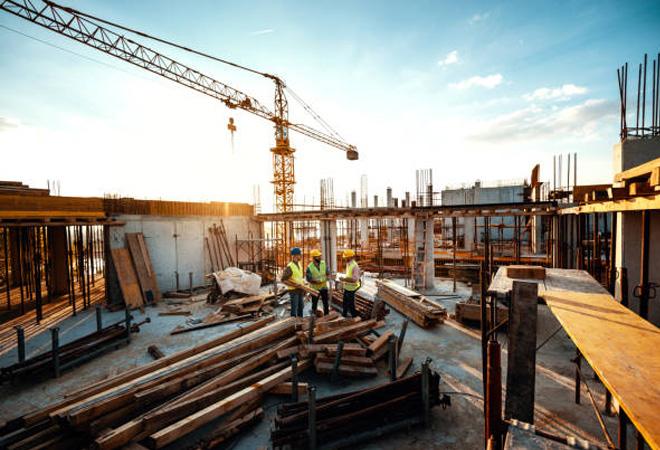-
CENTRES
Progammes & Centres
Location
The government needs to undertake more targeted policies to ensure that the inflow of investments is adequate to finance infrastructure development.

Infrastructure investment is witnessing renewed impetus from the government as the country slowly emerges from the pandemic, and the various sectors of the economy look forward to resuming normal activities. In this context, the recently launched central government’s ambitious policy programme, GatiShakti—National Master Plan for Multi-Modal Connectivity—promises an enhanced focus on infrastructure development by bringing together various central and state government infrastructure schemes including Bharatmala, Sagarmala, UDAAN and other economic development schemes focusing on industrial clusters and infrastructure corridors. Following GatiShakti’s launch, Finance Minister Nirmala Sitharaman announced in her Budget 2022–2023 speech that between 2022 and 2023, public investments will crowd in the private investments to put back on track the battered Indian economy.
The first concerns the regulatory and bureaucratic set of bottlenecks that for a long have pervaded the infrastructure development ecosystem in India and delayed and/or disrupted several large-scale infrastructure projects in the country.
The launch of GatiShakti and the budget announcement to create more space for private investments within the Indian economy are welcome moves for the Indian infrastructure sector. The two initiatives also speak to some of the longstanding problems that ail the infrastructure sector in India and pave the future roadmap for churning longer-term solutions for infrastructure development and financing in India. To this end, this article discusses the hindrances to infrastructure development and financing from two key viewpoints. The first concerns the regulatory and bureaucratic set of bottlenecks that for a long have pervaded the infrastructure development ecosystem in India and delayed and/or disrupted several large-scale infrastructure projects in the country. The second set of concerns relates to the problems of investments in infrastructure in India, particularly the relatively low levels of private investments in infrastructure in the country compared to developed countries and some other middle-income countries having similar economic growth trajectories. The article also takes note of the opportunities and challenges to infrastructure development posed by climate change and renewed interest in the social infrastructure highlighted by the pandemic conditions. However, before delving into these issues, it is pertinent to address the of question why infrastructure development is integral to the country’s larger economic growth.
NITI Aayog CEO Amitabh Kant emphasises that infrastructure spending has a multiplier effect on the entire economy. He explains that infrastructure projects catapult increased demand for labour and construction materials and have second-order effects on the economy by promoting greater connectivity and enhanced movements of goods and people. Scholarly literature in economics supports this position. The multiplier effect is notably larger in times of economic contraction than in economic expansion. Overall, public investments in infrastructure provide the impetus for economic growth.
The lack of coordination between various ministries and myriad administrative guidelines are the other factors that make the process cumbersome.
Constructing any infrastructure project, be it water supply to housing, or large-scale infrastructure projects such as roadways and highways, which often across different state or district boundaries, requires clearances and approvals at the central, state and local levels. The lack of coordination between various ministries and myriad administrative guidelines are the other factors that make the process cumbersome. Across Indian states, on average, the time for obtaining requisite approvals from various ministries and state departments can vary from 18 months to four to five years. Such procedural bottlenecks lead to project implementation and completion delays, often contributing to the loss of investor confidence.
Lengthy dispute resolution mechanisms add to the woes of private players. In cases of public-private partnership projects, unclear specifications on the allocation of risks and provisioning of services often lead to contract failures, leaving many projects half-finished or deferred timelines in cases of other infrastructure projects. To address the lacunae, the GatiShakti Master Plan aims to facilitate coordination across 16 government ministries dealing with infrastructure projects, including railways, aviation, electronics and telecommunication, shipping, road transport, textiles, and food processing. Using technology-based applications, the plan aims to ensure real-time coordination between various government departments and also calls for cross-sectoral project planning and execution (for example, simultaneous planning of connecting ports, railways, and highways).
Beyond administrative and regulatory hurdles, expanding the private sector investment portfolio remains a necessity and a concern for the infrastructure development sector. Given the burgeoning demand for infrastructural facilities, it is unlikely that public investments alone will suffice to fund these facilities.
Climate change has stirred the installation of low carbon infrastructure projects, with India leading the way in sectors as energy with around US $196.98 billion worth of projects already underway as of this writing.
Moreover, large-scale infrastructure projects require high initial investments and have low returns or generate profits only over a longer duration of time, if any. Therefore, tax revenues are inadequate sources to fund such projects. If we only consider the urban centres, the UN’s World Urbanisation Prospects 2018 estimates that India’s urban population will double between 2018 and 2050, from 461 to 877 million. Such population growth will automatically result in the rise of essential and non-essential built infrastructure facilities. Moreover, the COVID-19 pandemic has highlighted the critical need for social infrastructure, particularly healthcare services. Simultaneously, climate change has stirred the installation of low carbon infrastructure projects, with India leading the way in sectors as energy with around US $196.98 billion worth of projects already underway as of this writing. In addition, approximately 300 utility-scale renewable energy-based power generation projects are in the pipeline across the public and private sectors. Therefore, the infrastructure sector posits enormous opportunities for investments.
Barring key social infrastructure projects such as affordable healthcare services, rural public services and infrastructural amenities where the returns on investments remain extremely low, private sector investments can be mobilized in other infrastructure sectors. The lack of an amenable market environment and regulatory constraints affecting public-private partnerships have marred the trajectory of private sector investments in India. Particularly between 2008 and 2018, private investments in the country significantly declined from 37 per cent in 2008 to 25 per cent in 2018. The crisis of non-performing assets in the Indian banking sector was one primary reason for this decline. Apart from the banking industry, restrictive government norms deter investments from the insurance industry and pension funds, which could otherwise provide large amounts of long-term funding to infrastructure. Lastly, fostering public-private partnerships to attract private investments in infrastructure will require specific and targeted efforts. Here instruments such as special purpose vehicles or viability gap funding may be helpful as they mitigate financial risks to private players by allowing for part of the project funding from public investments and leveraging the remainder from the private sector.
Apart from the banking industry, restrictive government norms deter investments from the insurance industry and pension funds, which could otherwise provide large amounts of long-term funding to infrastructure.
At a time when India is poised to grow into a US $5 trillion economy and is also witnessing a surge of infrastructural facilities across sectors (energy, transport, logistics, etc.), it is imperative to boost the pandemic-impacted economy by mobilising the public and private sector infrastructure investments to their efficacy. While progressive changes in the regulatory regime will substantially enhance investor confidence, broadening the investment portfolio, especially private sector investments, is the need of the hour. Recent policy measures such as GatiShakti, National Infrastructure Pipeline and Asset Monetisation Plan address some of the abovementioned concerns. However, targeted policies that will bridge the gap between requirements of specific infrastructure projects and potential investment portfolios available in the market will be the key to tapping upcoming opportunities in the sector.
The views expressed above belong to the author(s). ORF research and analyses now available on Telegram! Click here to access our curated content — blogs, longforms and interviews.

Meenakshi Sinha is an Assistant Professor in Humanities and Applied Sciences at the Indian Institute of Management Ranchi. She previously held research positions at the ...
Read More +